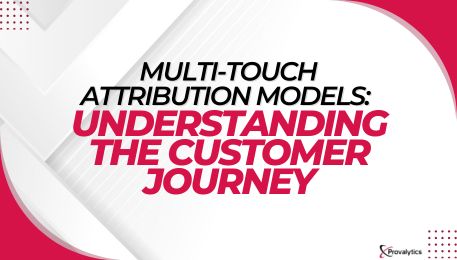Multi-Touch Attribution: Understanding the Customer Journey
Understanding Multi-Touch Attribution Modelsve greater access to information than ever before in today’s digital world, and their purchasing paths have become increasingly complex. With so many touchpoints along the way, marketers may find it difficult to determine which channels and assets are driving sales opportunities. This is where multi-touch attribution comes into play.
Multi-touch attribution is a set of rules for crediting different touchpoints along the conversion path. It assists marketers in understanding trends in how prospects progress through the sales funnel. Depending on the product you sell and the length of your buying cycle, there are several attribution models available, each with its own set of advantages and disadvantages.
🚀 Yes, I Want The 2024 Playbook!

Understanding Multi-Touch Attribution Models
First-touch attribution gives the page that first brought a visitor to your site full credit. While this model overemphasizes top-of-the-funnel marketing efforts, it does provide a simple way to identify what draws people to your brand.
The first touchpoint of the most recent visit is credited with last-touch attribution. For example, if a visitor views a blog post, then clicks on a CTA and converts on a landing page, the blog post will be credited. This model rewards the touchpoint where a conversion occurred directly and is useful for determining the effectiveness of your landing pages.
The first and last touchpoints are given equal weight in the first and last interaction model. A simple decay attribution model gives the most recent touchpoints a weighted percentage of the credit. This is useful if your buying cycle is short, as it assumes that the assets with which a prospect interacted closest to the time of sale are the most important in the purchase decision.
Benefits of Multi-Touch Attribution for Marketers
Every interaction during the buyer’s journey is given equal weight in the linear attribution model. An in-person event, for example, is given the same weight as a click on a banner ad. While this model provides a more in-depth understanding of the customer journey, it can be difficult to implement in practice.
Multi-channel attribution modeling is complicated, but it is critical for marketers who want to maximize ROI by allocating resources wisely. You can make data-driven decisions and optimize your marketing strategy by understanding which channels and assets are driving sales opportunities.
Multi-touch attribution is an essential tool for marketers who want to understand the customer journey and effectively allocate resources. Depending on the product you sell and the length of your buying cycle, there are several attribution models available, each with its own set of advantages and disadvantages. You can make data-driven decisions and optimize your marketing strategy to maximize ROI by using multi-touch attribution.
What are the different types of multi-touch attribution models?
There are several types of multi-touch attribution models, including first-touch attribution, last-touch attribution, first and last interaction model, decay attribution model, and linear attribution model. Each model has its own set of advantages and disadvantages, and the one you choose will depend on the product you sell and the length of your buying cycle.
What is first-touch attribution, and what are its benefits?
First-touch attribution gives the page that first brought a visitor to your site full credit. While this model overemphasizes top-of-the-funnel marketing efforts, it does provide a simple way to identify what draws people to your brand. The benefits of first-touch attribution are that it’s simple to understand and can help you identify which channels are driving the most traffic to your website.
What is last-touch attribution, and how can it help marketers?
Last-touch attribution credits the first touchpoint of the most recent visit with the conversion. For example, if a visitor views a blog post, then clicks on a CTA and converts on a landing page, the blog post will be credited. This model rewards the touchpoint where a conversion occurred directly and is useful for determining the effectiveness of your landing pages.
What is linear attribution, and why is it useful?
Linear attribution gives equal weight to every interaction during the buyer’s journey. This model provides a more in-depth understanding of the customer journey, but it can be difficult to implement in practice. Linear attribution is useful because it provides insight into how customers engage with your brand across multiple touchpoints.
Why is multi-channel attribution modeling important for marketers?
Multi-channel attribution modeling is critical for marketers who want to maximize ROI by allocating resources wisely. It allows you to make data-driven decisions and optimize your marketing strategy by understanding which channels and assets are driving sales opportunities.

